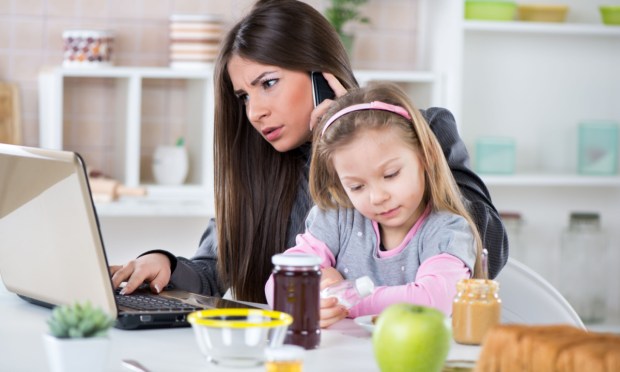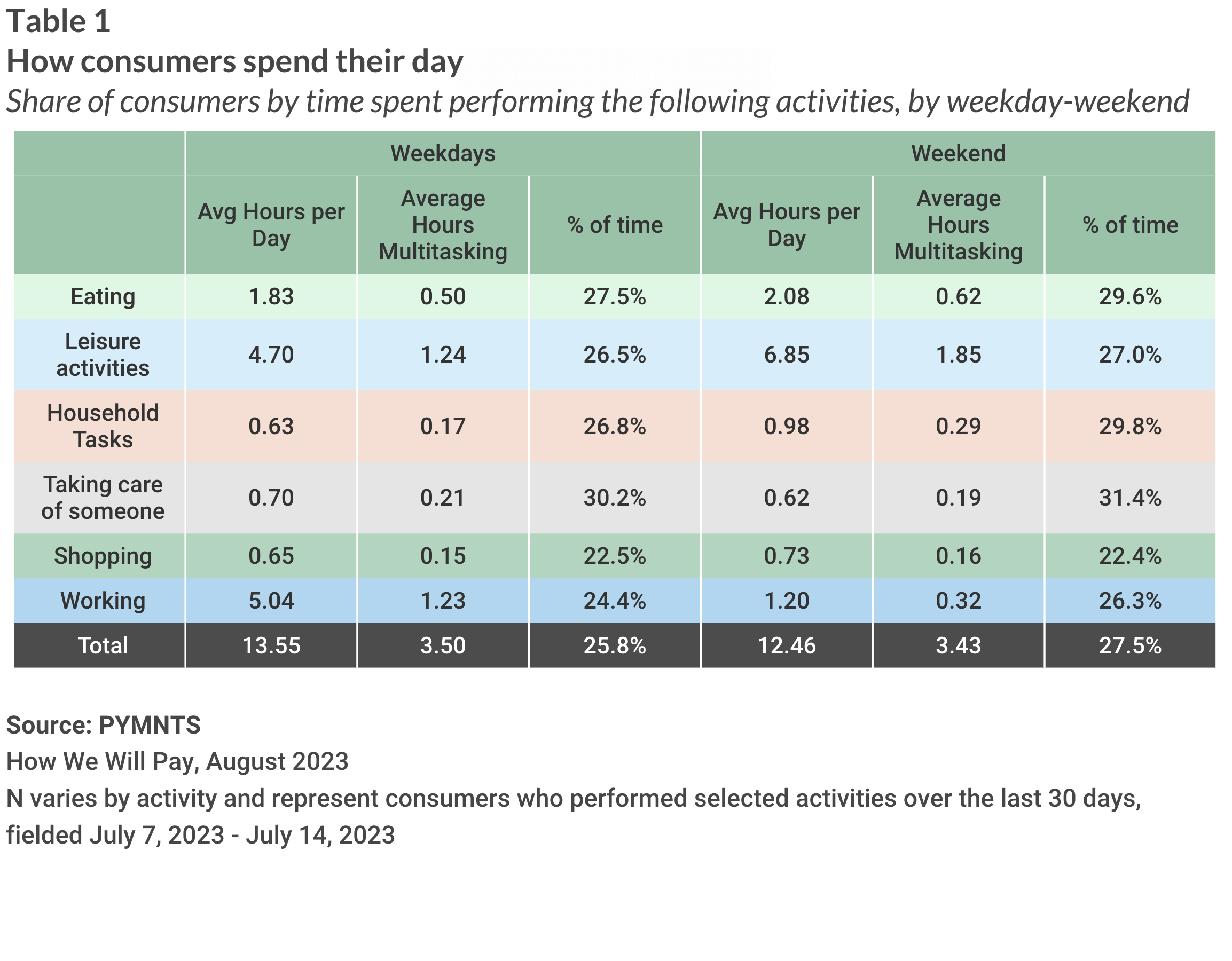Consumers Use Digital to Multitask Most While Caring for Others

As connected devices make consumers multitask more across their day-to-day routines, PYMNTS Intelligence finds which activities prompt people to split their focus, and which command their full attention.
Due in large part to the proliferation of smartphones and other connected devices, multitasking has become the norm for many individuals. The PYMNTS Intelligence August study “How We Will Pay,” which draws from a survey of more than 4,600 U.S. consumers over the summer, sheds light on how Americans spend their time and the role that digital devices play in their daily routines.
Overall, the results show, consumers spend 26% of their time during the week and 28% on weekends multitasking. Those shares jump up to 30% and 31%, respectively, when consumers are taking care of someone, greater percentages than said the same of any other activity.

People also tend to split their focus at mealtimes. The study found that consumers spend 28% of their time eating on the average weekday multitasking, and that portion goes up to 30% on weekends.
Somewhat surprising is the activity that is most likely to command consumers’ full focus — people spend only 22% to 23% of their shopping time multitasking, less than said the same of any other activity. As such, when it comes to buying, consumers are willing to commit their full attention.
The study was inspired by The American Time Use Study, which documents how people spend their day through surveys. However, simply asking individuals about their activities overlooks the impact of connected devices and apps on their time management.
Multitasking is not a new concept, as individuals have been listening to the radio while driving or reading the newspaper while watching TV for decades. What sets the modern digital world apart is the ability to use connected devices and apps to perform tasks that previously required physical presence.

